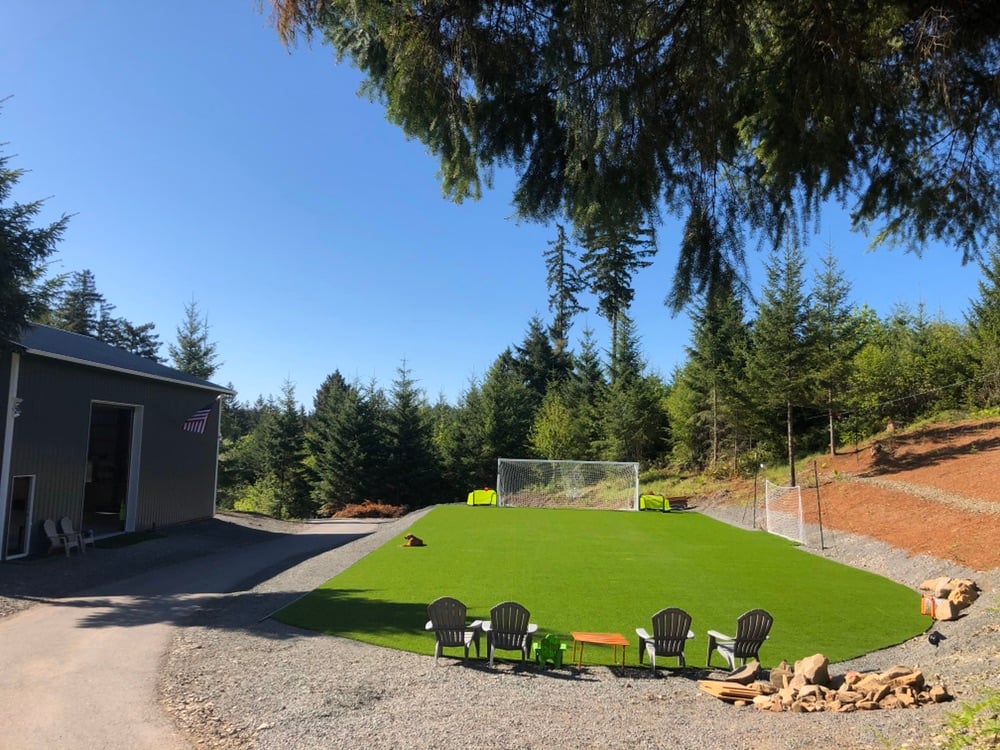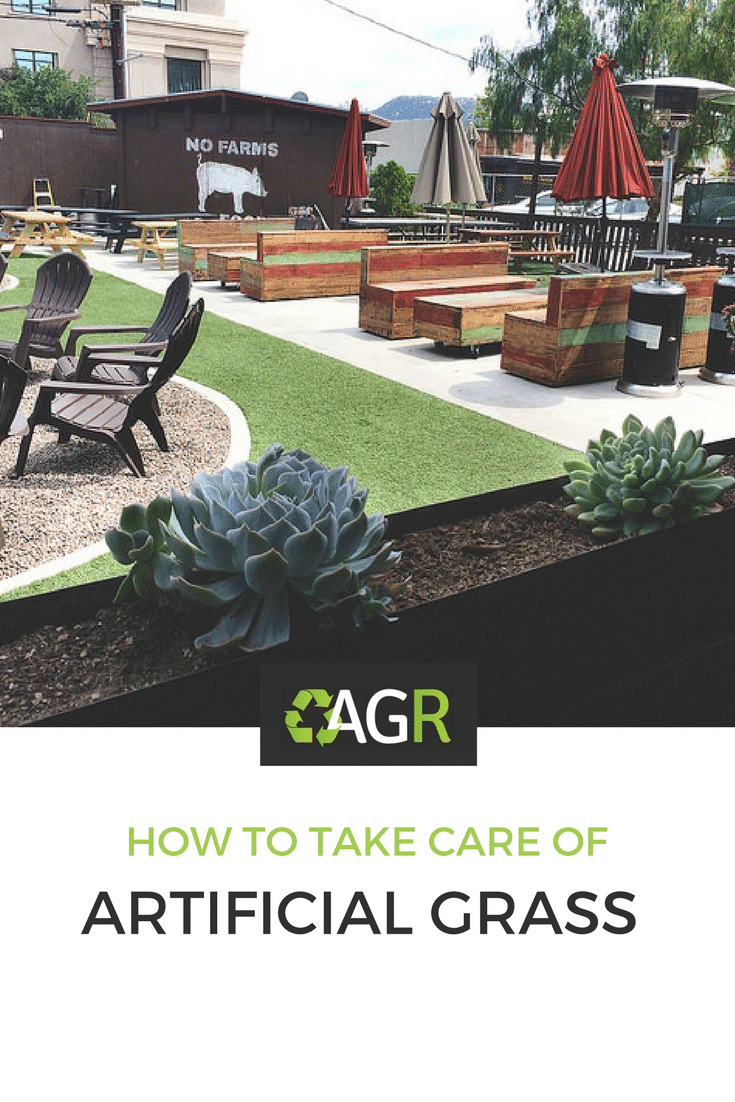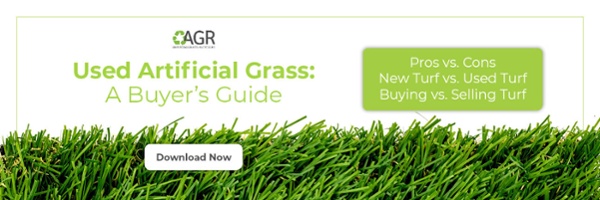You need to know how to care for your artificial grass lawn to ensure it lasts for years to come. Here are a few tips to help you get started.
Caring for artificial grass (synthetic turf) is much easier than caring for natural grass.
With just minimal time and effort, artificial grass can look spectacular and stay in wonderful condition for years— while also limiting environmental strain and water consumption.
Today, we’re taking a closer look at seven things you can do to take care of your artificial grass lawn.
Let’s get started.
Washing & Brushing
Basic maintenance of synthetic grass includes spraying with water and regular brushings. Additionally, spray cleaners may be utilized. Brushing the grass improves its appearance and wards off lingering debris.
Once every 1-3 months, spray the turf gently all over with a garden hose, or set up a sprinkler to encourage drainage. This will wash away dirt, dust, and pollen, and help keep the infill evenly distributed. The occasional rainfall also helps clean the turf and lowers the necessity for spraying.
Care for turf more frequently if it is used for sports, foot traffic, or large gatherings like picnics or parties. To avoid speeding up the deterioration of the infill, try not to soak the turf with water more than three times monthly. Turf used for display purposes only should just be rinsed a few times a year to eliminate dust.
Another option is using a special spray cleaner intended for the maintenance of synthetic grass. These often come with attachments to use with the garden hose, in order to dilute the cleaner and facilitate fast and easy application. Common synthetic grass solutions include disinfectant and odor-fighting properties. Biodegradable solutions are best for the environment.
Aside from spraying the grass with water or a mild cleaner, the grass should be brushed regularly to fluff the blades and maintain its fresh, natural appearance. Synthetic turf sometimes becomes flattened and worn.This can be remedied quickly by using a typical kitchen broom and brushing against the direction of the slanted blades.
For best results, use a brush specifically designed for synthetic turf maintenance. These brushes are stiff enough to quickly fluff grass while making sure not to dislodge infill or rip up blade fibers. Synthetic turf will need to be brushed more frequently during the first 1-2 months following installation, to ensure proper settling of infill.
Remembering Infill
Infill is an important component of turf maintenance. If infill becomes dislodged by heavy rains or wind, it can start coming up between the blades of grass. There are many types of infill available, and the type you choose should consider factors such as intended use and typical weather exposure. The most common types of synthetic infill are silica sand, thermoplastic elastomer (TPE) and polymer elastomer (EPMD). Organic infills are becoming more popular nowadays, and these can include cork or coconut fibers.
Debris
Debris is another enemy of synthetic turf. Leaves and branches that are not removed will rot and cause turf to deteriorate. Use a rake or leaf blower to get rid of debris, but take care not to rake too strongly because this will dislodge infill.
Shock Absorption
Shock absorption is another consideration when installing and maintaining synthetic turf. Certain types of infill provide a level of shock absorption, but using an additional mat or grid beneath the turf makes the grass feel more natural and pleasant to walk upon. Most shock-absorbing materials begin to degrade in quality after a few years, and then the grass will begin to feel harder. These layers are easily replaced by lifting up the turf, removing the mat and positioning a fresh mat, or perhaps re-evaluating the quality of your infill.
Prevention is Key
Prevention is a key element in caring for artificial grass. The turf should not be subjected to high heat. Be careful when using a barbecue near the grass, to prevent damage from hot coals and greasy drippings. Similarly, refrain from using fireworks on the grass and do not drive across it with cars or motorcycles. Other common enemies of synthetic grass include sunscreen, tanning oil, and chewing gum.
Synthetic grass is lovely because it does not require fertilizers, pesticides or heavy chemical components. In this context, take care not to apply any garden tonics intended for natural grass. Similar to a carpet, synthetic grass is susceptible to stains and any spills should be addressed immediately. If something is accidentally spilled on the turf, definitely do not use harsh detergents, acids, or alcohol, which will damage or discolor the grass.
Clean up spills by wiping the area with a damp cloth, and if necessary, use a cleaner specifically indicated for synthetic grass. If you do not have such a cleaning agent, use a gentle mixture consisting of a tablespoon or two of either, bleach, white vinegar or ammonium, diluted by at least six ounces of water in a spray bottle.
Planning For Weed Invasions
Surprisingly, weeds also pose a risk to synthetic grass. Weeds growing underneath the turf will cause damage and deformations. For this reason, weed the land thoroughly before laying the turf. Some synthetic grass is coated with herbicides, while other types of turf require a specially designed herbicide mat laid between the ground and turf. Most herbicide mats are effective for 3-5 years, after which they can be easily switched out and changed with a new mat.

Conclusion
If properly cared for, certain types of artificial grass are designed to last for up to 30 years. When in doubt, consult the manufacturer. While initially more costly than natural grass, synthetic grass requires much less time and effort in the long run and offers an equally attractive appearance for lawns.

Oct 3, 2017 7:55:16 AM


